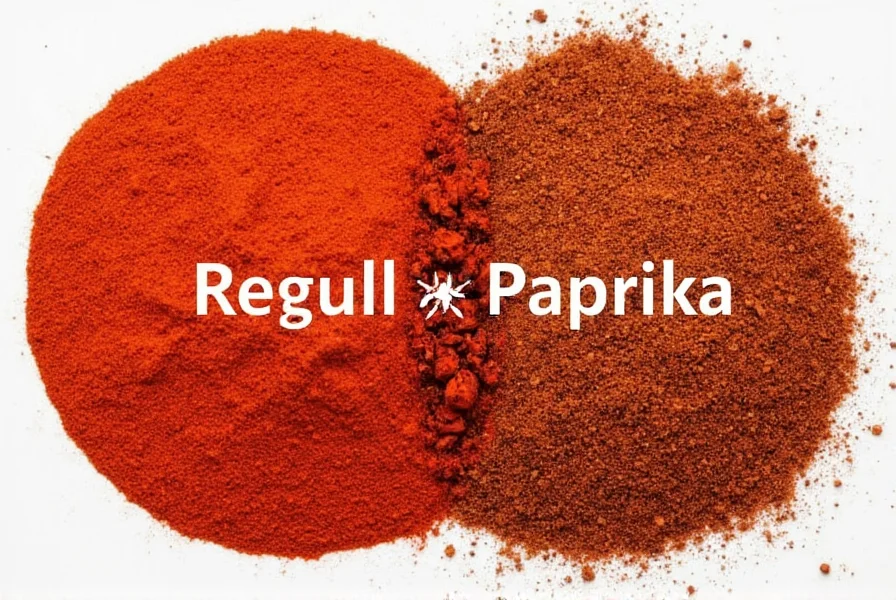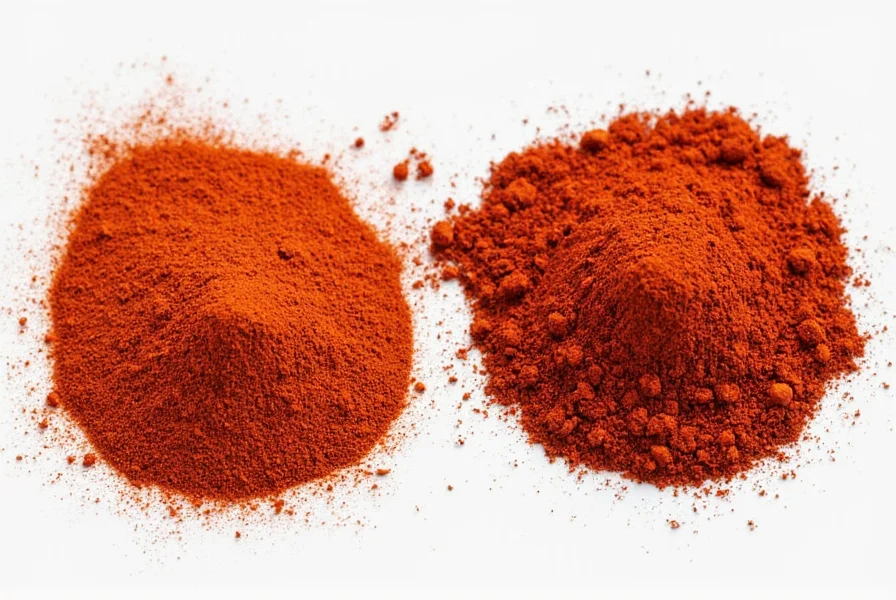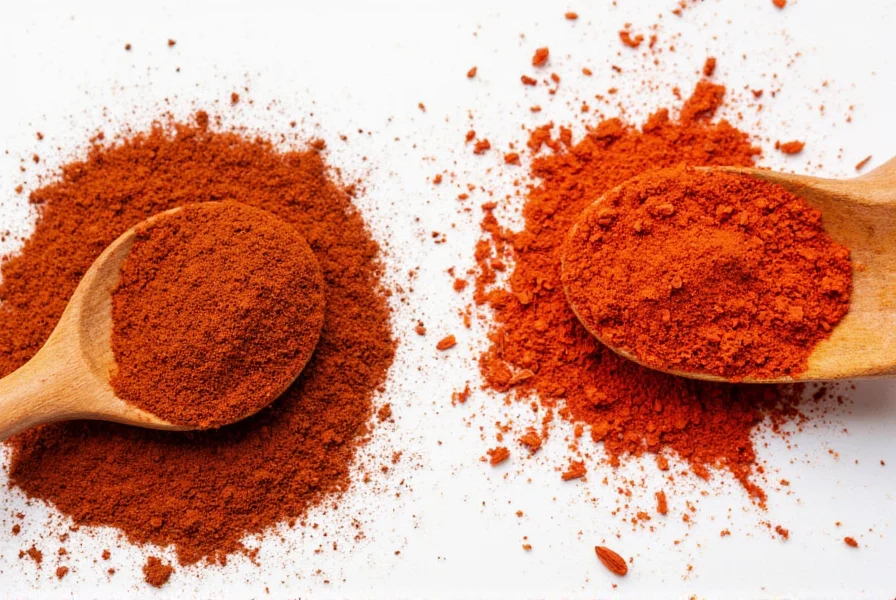Understanding the distinction between smoked paprika and regular paprika is essential for any serious home cook or culinary enthusiast. While both originate from ground Capsicum annuum peppers, their processing methods create dramatically different flavor experiences that can make or break your dishes.
Production Methods: The Core Difference
The critical divergence between these two spice varieties lies in their drying process. Traditional paprika production involves air-drying ripe peppers in the sun or in drying rooms, then grinding them into powder. This method preserves the pepper's natural characteristics without introducing additional flavor elements.
Smoked paprika, known as pimentón in Spain where it originated, undergoes a specialized smoking process. Peppers are slowly dried over oak wood fires for several weeks, absorbing the smoky essence that defines this spice. This traditional smoking method, particularly in regions like La Vera in Spain, creates the complex flavor profile that distinguishes smoked paprika from its regular counterpart.

Flavor Profiles Compared
When evaluating smoked paprika versus regular paprika, flavor complexity is the most significant differentiator:
| Characteristic | Smoked Paprika | Regular Paprika |
|---|---|---|
| Primary Flavor Notes | Smoky, earthy, complex with subtle wood notes | Bright pepper flavor, ranging from sweet to hot |
| Heat Level | Generally mild to medium (varies by type) | Sweet (mild), Bitter (medium), Hot (spicy) |
| Color Intensity | Deep brick red to mahogany | Bright red to orange-red |
| Best Culinary Applications | Barbecue, stews, roasted meats, Spanish chorizo | Chicken paprikash, deviled eggs, potato salad |
Types of Regular Paprika
Regular paprika comes in three main varieties that differ in heat and flavor:
- Sweet Paprika - The most common variety, with a mild, slightly sweet flavor and vibrant red color. Perfect for adding color without heat to dishes like potato salad or deviled eggs.
- Hot Paprika - Contains spicy Capsicum varieties, delivering noticeable heat while maintaining the characteristic paprika flavor. Used in Hungarian goulash and other spicy dishes.
- Bitter Paprika - Less common outside Central Europe, with a more complex, slightly bitter profile that works well in traditional meat dishes.
Culinary Applications: When to Use Which
Choosing between smoked paprika and regular paprika depends on your recipe's flavor requirements. For traditional Hungarian dishes like chicken paprikash, regular sweet paprika is essential—it provides the authentic flavor profile that defines the dish. Substituting smoked paprika would create an entirely different culinary experience.
Conversely, Spanish recipes like paella or chorizo require smoked paprika to achieve their signature flavor. The smokiness replicates the effect of traditional wood-fired cooking methods used in Spanish cuisine. In barbecue applications, smoked paprika adds depth that regular paprika cannot match, making it invaluable for rubs and marinades.

Substitution Guidance
When you need to substitute one for the other, consider these practical approaches:
- Replacing smoked paprika - Use regular paprika plus a few drops of liquid smoke, or add chipotle powder for smokiness with heat. For Spanish recipes, this substitution works best when you combine sweet paprika with a small amount of smoked salt.
- Replacing regular paprika - Use smoked paprika sparingly (½ to ⅓ the amount) in dishes where smokiness complements rather than dominates. For Hungarian dishes requiring sweet paprika, this substitution alters the authentic flavor profile significantly.
Remember that smoked paprika's flavor intensifies when cooked, so add it later in the cooking process than regular paprika to preserve its delicate smoky notes.
Storage and Shelf Life Considerations
Both varieties require proper storage to maintain their flavor integrity. Store paprika in airtight containers away from light and heat. The smoking process gives smoked paprika slightly better shelf stability—typically 18-24 months compared to 12-18 months for regular paprika. Always check for vibrant color and strong aroma to verify freshness; faded color or weak scent indicates the spice has lost potency.
Frequently Asked Questions
Is smoked paprika hotter than regular paprika?
No, heat level isn't determined by the smoking process. Both smoked and regular paprika come in sweet, medium, and hot varieties. The smoking adds flavor complexity but doesn't inherently increase heat. Spanish smoked paprika (pimentón) is typically mild, while Hungarian hot paprika delivers significant heat without any smoking.
Can I use regular paprika instead of smoked paprika in chili?
You can substitute, but the flavor profile will change significantly. For authentic Texas-style or smoked chili, regular paprika lacks the essential smoky depth. If substituting, use 1 teaspoon regular paprika plus ¼ teaspoon chipotle powder per teaspoon of smoked paprika required to approximate the smoky flavor without overwhelming the dish.
What makes Spanish smoked paprika different from other varieties?
Spanish smoked paprika (pimentón) is distinctive because of its traditional production method in regions like La Vera, where peppers are smoked over oak fires for 10-15 days. This creates three varieties: dulce (sweet), agridulce (bittersweet), and picante (spicy). The smoking process uses specific oak varieties and controlled temperatures that give Spanish smoked paprika its characteristic deep, complex smokiness unlike industrially smoked versions.
Does the color of paprika indicate its flavor profile?
Yes, color provides important clues. Bright red to orange-red indicates regular sweet paprika, while deeper brick red to mahogany suggests smoked paprika. Darker shades within smoked varieties often indicate longer smoking times and more intense flavor. Hungarian paprika tends to have a brighter red color compared to the deeper tones of Spanish smoked varieties, reflecting their different production methods and pepper varieties.











 浙公网安备
33010002000092号
浙公网安备
33010002000092号 浙B2-20120091-4
浙B2-20120091-4